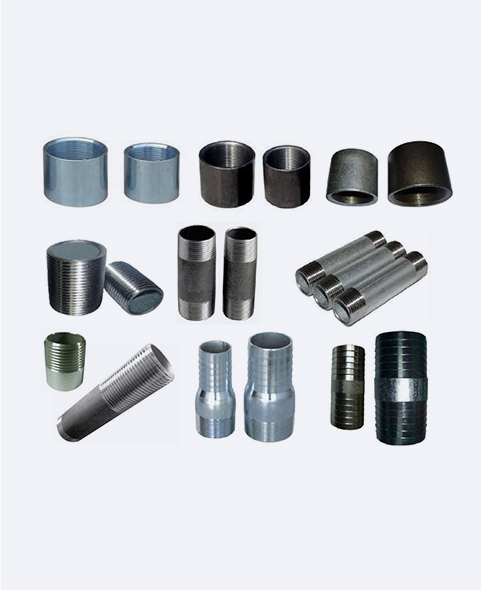-
Cangzhou Yulong Steel Co., Ltd.
-
Phone:
+86 13303177267 -
Email:
admin@ylsteelfittings.com
- English
- Arabic
- Italian
- Spanish
- Portuguese
- German
- kazakh
- Persian
- Greek
- French
- Russian
- Polish
- Thai
- Indonesian
- Vietnamese
- Zulu
- Korean
- Uzbek
- Hindi
- Serbian
- Malay
- Ukrainian
- Gujarati
- Haitian Creole
- hausa
- hawaiian
- Hebrew
- Miao
- Hungarian
- Icelandic
- igbo
- irish
- Japanese
- Javanese
- Kannada
- Khmer
- Rwandese
- Afrikaans
- Albanian
- Amharic
- Armenian
- Azerbaijani
- Basque
- Belarusian
- Bengali
- Bosnian
- Bulgarian
- Catalan
- Cebuano
- China
- China (Taiwan)
- Corsican
- Croatian
- Czech
- Danish
- Esperanto
- Estonian
- Finnish
- Frisian
- Galician
- Georgian
- Kurdish
- Kyrgyz
- Lao
- Latin
- Latvian
- Lithuanian
- Luxembourgish
- Macedonian
- Malgashi
- Malayalam
- Maltese
- Maori
- Marathi
- Mongolian
- Myanmar
- Nepali
- Norwegian
- Norwegian
- Occitan
- Pashto
- Dutch
- Punjabi
- Romanian
- Samoan
- Scottish Gaelic
- Sesotho
- Shona
- Sindhi
- Sinhala
- Slovak
- Slovenian
- Somali
- Sundanese
- Swahili
- Swedish
- Tagalog
- Tajik
- Tamil
- Tatar
- Telugu
- Turkish
- Turkmen
- Urdu
- Uighur
- Welsh
- Bantu
- Yiddish
- Yoruba

Oct . 13, 2024 22:50 Back to list
Understanding the Properties and Applications of Bending Tubular Steel in Construction
Bending Tubular Steel Techniques and Applications
Bending tubular steel is a crucial process in manufacturing and construction, as it allows for the development of complex shapes and structures. This technique plays a significant role in various industries, including automotive, aerospace, architecture, and structural engineering. The ability to bend steel tubes—whether circular, square, or rectangular—enables designers and engineers to create innovative solutions that meet specific structural and aesthetic requirements.
Understanding Tubular Steel
Tubular steel is a type of steel that is shaped into a tube form, which can be hollow in the center. The most common types are circular, square, and rectangular tubes, each of which has distinct properties and applications. Tubular steel is widely valued for its strength-to-weight ratio, making it advantageous in many applications, as it provides considerable strength while being relatively lightweight. This characteristic is particularly appealing in industries where reducing weight is essential, such as in the construction of vehicles or aircraft.
Bending Techniques
There are several methods used in bending tubular steel, each with its own advantages and applications. The most common methods include
1. Mandrel Bending This technique involves using a mandrel (a supportive rod inside the tube) to prevent the steel from collapsing during the bending process. Mandrel bending is particularly useful for creating tight-radius bends without distorting the tube's shape. It is often used in applications where aesthetics and precision are paramount, such as in exhaust systems or architectural features.
2. Rotary Draw Bending In this process, the tube is drawn over a form while being rotated. This method is known for producing smooth and consistent bends. Rotary draw bending is commonly used in applications that require intricate shapes, such as in the automotive industry for roll cages and chassis components.
bending tubular steel

3. Roll Bending This technique uses a series of rollers to gradually bend the tube into the desired shape. Roll bending is best suited for producing larger curves and is often employed in applications like constructing frames for large machinery or equipment.
4. Heat Bending By applying heat to specific areas of the tube, it can be made more pliable, allowing for bending without significant force. This method is useful for achieving certain bends that might otherwise cause cracking or imperfections in the steel. However, precise temperature control is critical to prevent overheating, which could weaken the material.
Applications of Bending Tubular Steel
The applications of bent tubular steel are extensive and varied. In the construction sector, bent steel tubes are used in the framework of buildings, bridges, and various infrastructure projects. Their strength and durability make them ideal for supporting structures that must withstand heavy loads and environmental stresses.
In the automotive industry, bending tubular steel is essential for creating components such as roll cages, bumpers, and exhaust pipes. These parts often require intricate designs that can only be achieved through bending, ensuring that vehicles not only perform well but also meet safety standards.
Architecturally, bent tubular steel can be seen in modern design features, including railings, canopies, and facades. The aesthetic appeal of bending allows architects to create visually striking elements that enhance a building's overall design.
Conclusion
Bending tubular steel is a versatile and essential skill in various industries, enabling the creation of both functional and aesthetically pleasing structures. As technology advances, the methods used for bending continue to evolve, improving precision, efficiency, and capabilities. With its wide range of applications and fundamental importance, the ability to bend tubular steel will remain a critical component of manufacturing and construction for years to come. Understanding the techniques and benefits of this process is crucial for engineers, designers, and anyone involved in the industry.
Latest news
-
ANSI 150P SS304 SO FLANGE
NewsFeb.14,2025
-
ASTM A333GR6 STEEL PIPE
NewsJan.20,2025
-
ANSI B16.5 WELDING NECK FLANGE
NewsJan.15,2026
-
ANSI B16.5 SLIP-ON FLANGE
NewsApr.19,2024
-
SABS 1123 FLANGE
NewsJan.15,2025
-
DIN86044 PLATE FLANGE
NewsApr.19,2024
-
DIN2527 BLIND FLANGE
NewsApr.12,2024
-
JIS B2311 Butt-Welding Fittings LR/SR 45°/90° /180°Seamless/Weld
NewsApr.23,2024











